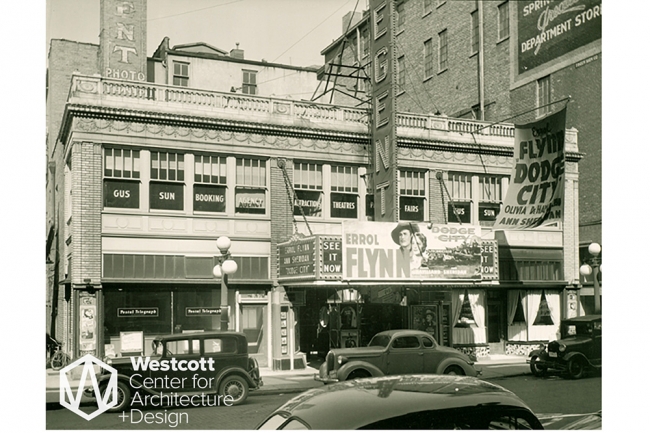With its subtle frieze and inconspicuous exterior, one might not imagine that the Regent Theatre is in fact one of Springfield’s cultural and architectural treasures. Dating back to 1920, the theatre was originally designed to be a combination vaudeville theater and movie house, and is the only one of its kind in Springfield.
The design for The Regent sprung from the mind of C. Howard Crane, beloved architect of the Detroit Orchestra Hall among many others. Blending classical 18th century styles with the modern Art Deco style of the early 20th century, Crane’s “palace of beauty” (as it was once called) is not only a marriage of old elegance to chic artifice, but is “a splendid example of modern architecture” and all its potential.
The Regent was originally built for vaudeville mogul Gus Sun, and it touted the logo “Sun’s Regent—Where the stars twinkle first.” Indeed they did: Sun, who managed small-time, regional vaudeville all across the country, gave many of America’s beloved performers their start in show business. Most notably, a young Bob Hope on his first comedic tour played the Regent not long after it opened.
The theatre opened on August 16 1920 with the Norma Talmadge picture Yes or No, as well as a Mack Sennett comedy and a pictorial review. However, as the taste for vaudeville fell to the wayside in the 1930s, the theatre’s ability to screen so-called “Photo-plays” became the more dominant of its uses. The Regent continued to screen movies until 1992 and is currently under restoration. More than merely serving as an old movie theatre, The Regent stands as a testament to Springfield’s flourishing days, when the splendor and excitement of Hollywood was a perfect fit for Springfield’s vibrant downtown.

